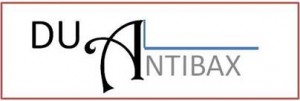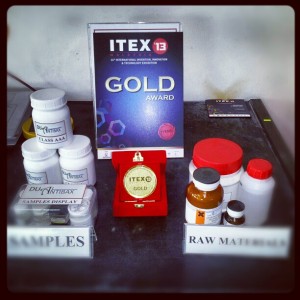Current scenario, problem with current scenario and its solution.
Nowadays, there is increasing demands for the powerful, versatile, easy-to-handle and cheap antimicrobial agents. It is due to the increasing microbial resistance to conventional antimicrobial agents. Failure of some antimicrobial agents to kill microbial cells or inhibit microbial growth can cause increasing diseases related pathogenic microorganisms. Thus, needs of having hygienic lifestyle is crucial nowadays.
Therefore, one technique in preventing infection of microbial to human is the use of powerful yet safe antimicrobial agents in our daily products that can kill wide spectrum of pathogenic-microorganism or inhibit their growth. Antimicrobial agents can be divided into many types such as Quaternary Ammonium Compounds (QAC), antimicrobial metals (Ag, Zn or Cu), alcohols, chlorine etc.
One of prominent antimicrobial agents nowadays is silver nanoparticles (SN) that can kill wide spectrum of bacteria and it has been used in many products such as in washing machine, deodorant, household products, coating materials etc. The particle size of silver-nanoparticles is below 100 nm (100 x 10-9 m) However, the usage of SN is uneconomical because of the high production cost and safety issues related to the handling of very tiny form of nanomaterials.
Solution
Our product is called DUAL-ANTIBAX because of the combination of two antimicrobial agents (QAC and antimicrobial metals) in one carrier system (clay). DUAL-ANTIBAX is a powerful, versatile and easy-to-handle antimicrobial agent because it has synergistic effects of two antimicrobial agents and it can be produced according to the level of treatment. DUAL-ANTIBAX is in powder form, thus it is easy to be managed, handled, stored and transported. It can be considered cheap because the carrier system is made from naturally occurring clay and the production cost is low due to simple manufacturing technique. It is proven from our previous antimicrobial assay that it has higher antimicrobial activity compared to single antimicrobial agents (QAC-clay and Ag-Clay). It can perform well in solutions containing electrolyte such as in saline solution. DUAL-ANTIBAX is better than the existing antimicrobial products because they only using single antimicrobial agents that the ability to kill or inhibit microbial growth is limited.
The motivation in developing DUAL-ANTIBAX as new antimicrobial agents emerges from these problems:
1. Bacteria can develop resistance to antibiotic and antimicrobial agents and also increasing diseases related pathogenic bacteria1
2. Metal antimicrobial ions especially silver ion (Ag+) can react with chloride ion (Cl-) in saline solution and form precipitate (AgCl). This reaction could decrease antimicrobial activity of silver based products2.
3. Silver especially silver nitrate (AgNO3) which is source of antimicrobial agent can cause agryria when apply to skin. The skin becomes blue or bluish-grey colored when exposed directly to silver-based products3
4. All of these problems can be overcome by the addition of another antimicrobial agent especially Quaternary Ammonium Compound (QAC), however, our previous study has shown that metal ions cannot be combined together with QAC in solution form thus they need carrier system such as clay to hold and retain antimicrobial ions and compounds4
5. Nowadays, silver nanoparticles which widely used as antimicrobial agent are available in market. However, it has disadvantages such as costly, difficult to manufacture and difficult to handle.
references:
1 World Health Organization (WHO), (2012). Antimicrobial resistance. Fact sheets. http://www.who.int/mediacentre/factsheets/fs194/en/
2 De la Rosa-Gómez, I., Olguín, M.T. and Alcántara, D. (2008) Bactericides of coliform microorganisms from wastewater using silver-clinoptilolite rich tuffs. Applied Clay Science, 40, 45-53.
3 Isikli, B., Demir, T.A., Ozelmas, U., Berber, A. (1998). Effects of silver on humans living near a silver mine. Tr. J. Med. Sci. 655-659.
4 Nik Ahmad Nizam Nik Malek, Micheal Moses, Radhiahtul Raehan Mustafa. Effect of Quaternary Ammonium Compounds on the Bactericidal Activity of Inorganic Antibacterial Materials. International Congress on the Malaysian Society for Microbiology 2011 (ICMSM2011), 8-11 Dec 2011, Bayview Beach Resort, Batu Feringghi, Penang.
Antimicrobial resistance is a resistance of microorganism to an antimicrobial medicine to which it was previously sensitive. Resistant microorganisms are able to withstand attack of antimicrobial agents and consequently leading to prolonged illness and greater risk of death. According to WHO, one of the factor contributes to antimicrobial resistance is poor infection prevention and control practices1. Therefore, the application of DUAL-ANTIBAX during skin infection can prevent this problem to occur because DUAL-ANTIBAX can kill pathogenic bacteria yet safe to human and finally preventing antimicrobial resistance to happen.
Ag based products possess some problems where their effectiveness as antimicrobial agents decreases in solutions containing electrolyte. Ag based products can form insoluble precipitates such as AgCl and Ag2S complexes when contacting electrolyte (chloride or sulphur anions) thus lowering its antimicrobial activity2. Because of this problem, Ag based products are not suitable to be used as antimicrobial coating on ship’s hull to prevent the attachment of barnacles because of high electrolyte content in surface water.
One of the alternatives techniques to overcome this problem is by the combination of Ag with Quaternary Ammonium Compounds (QAC) because QAC has an affinity towards chloride or bromide ions (electrolytes) which acts as its counter ion. However, it was found in our previous experiment that Ag was not suitable to work together with QAC as antimicrobial agent in the solution because the antimicrobial activity of the combination of Ag and QAC were inconsistent and most of them reduced the antimicrobial activity4 . Therefore, it is proposed that these two types of antimicrobial agents can be immobilized on the suitable carrier system and it will produce liquid/solid system which is different with liquid/liquid (solution) system. One of the suitable carrier systems is clay because it has ability to exchange its cation, stable, widely used in cosmetic and abundant in nature. Thus, DUAL-ANTIBAX which is the combination of metal ions (Ag) and QAC on clay is the product that can overcome problem with silver-based products.
One of the existing and widely used antimicrobial agents in market nowadays is silver nanoparticles. It has been shown to have good antimicrobial activity against wide spectrum of bacteria and it is widely applied in various products. However, silver nanoparticles also have significant drawbacks:
1. Production cost is very high because the particles that need to be produced is in nano size (<100 nm). Thus, it needs high-end instruments such as X-Ray Diffraction (XRF), UV-Vis Spectrophotometer, X-Ray Fluorescence (XRF), Scanning Electron Microscope (SEM), particles size analyzer etc in order to characterize and verify the synthesized silver nanoparticles. All of these high-end instruments are very expensive and the service charge for the characterization of samples also quite expensive. Compared to silver nanoparticles, the production cost of DUAL-ANTIBAX is cheaper since raw materials are silver ions, surfactant and clay and the production process is simple where they are mixed together in solution form. For the analysis of DUAL-ANTIBAX, analyses of surfactant adsorb on clay by wet chemical method and analysis of metal by Energy Dispersive X-ray (EDX) are enough to characterize DUAL-ANTIBAX after its production.
2. According to Rukeyser (Rukeyser, M (2012). Understanding the germicidal effects of silver nanoparticles. Environmental Health Perspectives. 120: A386.) , the antimicrobial action of silver nanoparticles was due to the release of silver ions to the environment similar to the action of AgNO3. Thus, effect of silver nanoparticles will be similar to the effect of silver ions such as:
a) expensive disinfectant
b) can cause agryria to human skin
c) can cause collateral environmental damage (toxic to higher organisms including rygrass, algae, beneficial nematode etc)
d) lower antimicrobial activity in saline solution
He suggests that the release of silver ions need to be controlled by using carrier system such as polymer coatings and the slow release is essential to avoid excess toxicity to the environment.
Originality
The originality of this product is based on new process route of manufacturing process as stated in patent filing documents and results of novelty search. In previous patents, the amount of inorganic metal and QAC are not attached to the clay in equal ratio. It might be only one or almost one of them either the metal or QAC inhibit the growth of bacteria. Thus, this application might inhibit only limited range of bacteria species. To have optimum effect from both antimicrobial agents (metal and QAC) to inhibit bacterial growth or to kill bacterial cells, the ratio of both of them need to be equally attached to the clay framework. A a result, the two of them might be able to work together precisely to kill a broad spectrum of bacteria.
Innovativeness
1. DUAL-ANTIBAX is a combination of two antimicrobial agents inside clays framework with optimized ratio of the amount of antimicrobial agents attached on clay.
2. The antimicrobial activity of DUAL-ANTIBAX is higher compared to singly-antimicrobial agent and higher in saline solution compared to silver-based products.
3. The antimicrobial action of DUAL-ANTIBAX is for wide spectrum of bacterial species and it can kill bacteria cells as well as inhibit the bacteria growth.
4. Low cost: a process of manufacturing DUAL-ANTIBAX is simple and it can be easily manufactured at ambient pressure and temperature without involving any solvent.
5. DUAL-ANTIBAX is not toxic to human and animal skin.
Special Features
DUAL-ANTIBAX is in powder form, thus it is easy to be handled, stored, packaging, transported and applied for various purposes. DUAL-ANTIBAX is a combination of two antimicrobial agents (QAC and metal) in one carrier system (clay). The unique feature of DUAL-ANTIBAX can be seen in the flow diagram of process route (Figure 1) where from the new process route, metal ions will be placed inside the clay framework and allowing QAC molecules to attach at the outer layer of clay framework. Because of the excess QAC molecules on the surfaces of clay framework, QAC molecules can create double layer through hydrophobic bonding hence allowing bacterial cells to be attached on QAC layer. This unique feature of DUAL-ANTIBAX contributes to the increase antimicrobial activity and also it can perform well in saline solution compared to conventional antimicrobial agents typically from single antimicrobial agent. Although two antimicrobial agents are combined together in one carrier system, the leaching problem of QAC and metal ions from clay will not occur thus it will not harm the environment or human. In previous studies, Hu and Xia6 found that the antimicrobial activity of Copper modified clay was due to the localization of Cu ions on the clay surface and not due to Cu ions released. In another study, Li et al7 found that the QAC molecules will remain attached on clay up to 17 weeks. Thus, it can be concluded that one of the special feature of DUAL-ANTIBAX is the combination of two antimicrobial agents in one carrier system and it is different compared to existing single antimicrobial agent.



